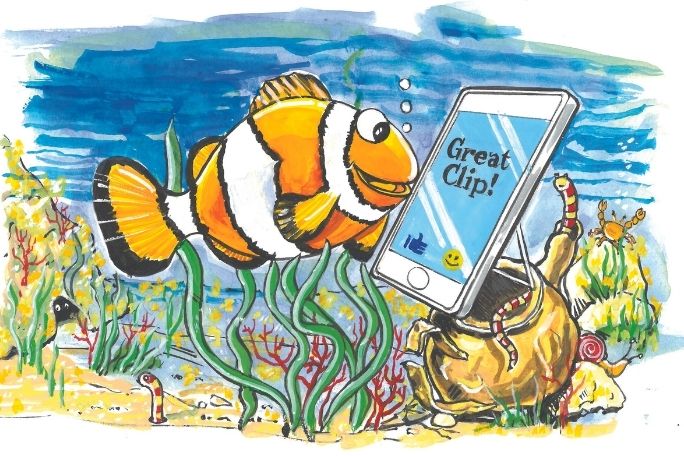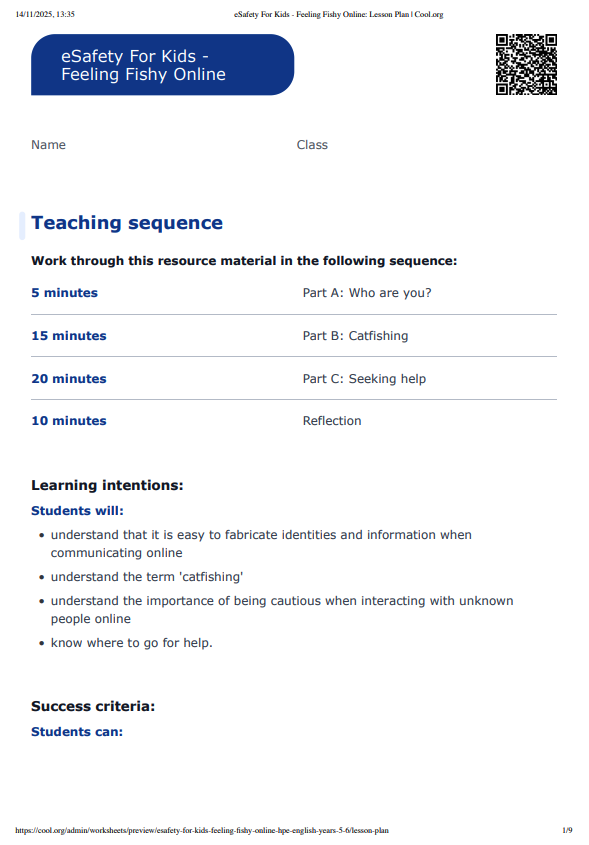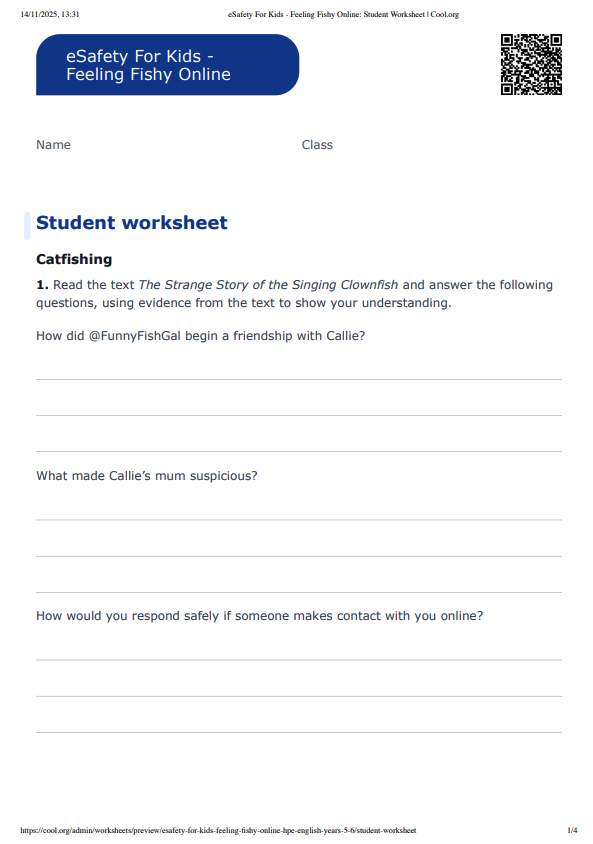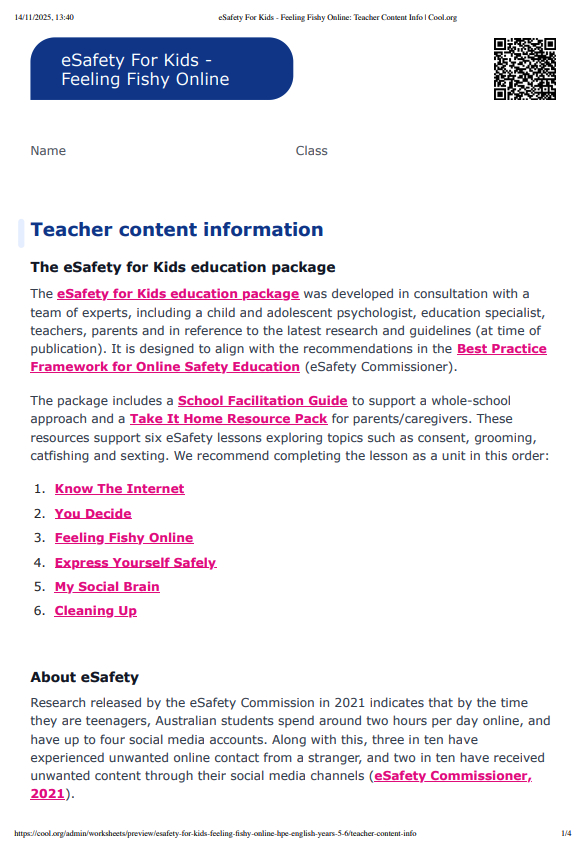Lesson summary
Students will read a story that introduces the concept of ‘catfishing’. That is, pretending to be someone else online in order to gain trust and ultimately request something from their target. They will then explore how to respond if something seems ‘off’ in an online interaction.
Learning intentions:
Students will:
- understand that it is easy to fabricate identities and information when communicating online
- understand the term 'catfishing'
- understand the importance of being cautious when interacting with unknown people online
- know where to go for help.
Success criteria:
Students can:
- create a list of possible responses when interacting with someone who makes them uncomfortable
- respond assertively to uncomfortable situations
- support others to respond safely.
Lesson guides and printables
Curriculum links
Select your curriculum from the options below.
Lesson details
Skills
This lesson is designed to build students’ competencies in the following skills:
- communication
- digital literacy
- ethical understanding
- social skills
Curriculum Mapping
Australian Curriculum content descriptions:
Years 5 & 6 Health and Physical Education
- Plan and practise strategies to promote health, safety and wellbeing (ACPPS054)
- Examine the influence of emotional responses on behaviour and relationships (ACPPS056)
- Recognise how media and important people in the community influence personal attitudes, beliefs, decisions and behaviours (ACPPS057)
Year 5 English:
- Present a point of view about particular literary texts using appropriate metalanguage, and reflecting on the viewpoints of others (ACELT1609)
Year 6 English:
- Make connections between students’ own experiences and those of characters and events represented in texts drawn from different historical, social and cultural contexts (ACELT1613)
Syllabus outcomes: PHS3.12, SLS3.13, COS3.1, INS3.3, IRS3.11, DMS3.2, EN3-2A, EN3-8D
General capabilities: Literacy, Personal and Social Capability, Ethical Understanding, Information and Communication Technology (ICT) Capability
Relevant parts of Years 5 & 6 HPE achievement standards:
Students explain the influence of people and places on identities. They recognise the influence of emotions on behaviours and discuss factors that influence how people interact. They describe their own and others’ contributions to health, physical activity, safety and wellbeing.
Relevant parts of Year 5 English achievement standards:
Students analyse and explain literal and implied information from a variety of texts. They describe how events, characters and settings in texts are depicted and explain their own responses to them. They listen and ask questions to clarify content. They recognise the influence of emotions on behaviours and discuss factors that influence how people interact.
Relevant parts of Year 6 English achievement standards:
Students compare and analyse information in different and complex texts, explaining literal and implied meaning. They select and use evidence from a text to explain their response to it. They recognise the influence of emotions on behaviours and discuss factors that influence how people interact.
This lesson is part of the wider unit of work eSafety For Kids
Time required: 50 mins
Level of teacher scaffolding: High – support students with research and ideas
Resources Required
- Device to share video and text with class
- Glossary of Key Terms (optional)
- Handling Sensitive Topics and Issues Factsheet (digital copy)
- Reverse Image Search Factsheet
- Student Worksheet – one copy per student
- The Strange Story of the Singing Clownfish
Additional Info
Although this can be completed as a standalone lesson, it will be most effective if completed within the sequence of the unit, as follows:
The eSafety for Kids education package was developed in consultation with a team of experts, including a child and adolescent psychologist, education specialist, teachers, parents and in reference to the latest research and guidelines (at time of publication). It is designed to align with the recommendations in the Best Practice Framework for Online Safety Education (eSafety Commissioner).
The images for this eSafety for Kids package are sourced from The Tweeting Galah book series and used with permission from Kim Maslin.




Welcome back!
Don't have an account yet?
Log in with:
Create your free Cool.org account.
Many of our resources are free, with an option to upgrade to Cool+ for premium content.
Already have an account?
Sign up with:
By signing up you accept Cool.org's Terms and Conditions(Opens in new tab) and Privacy Policy(Opens in new tab).